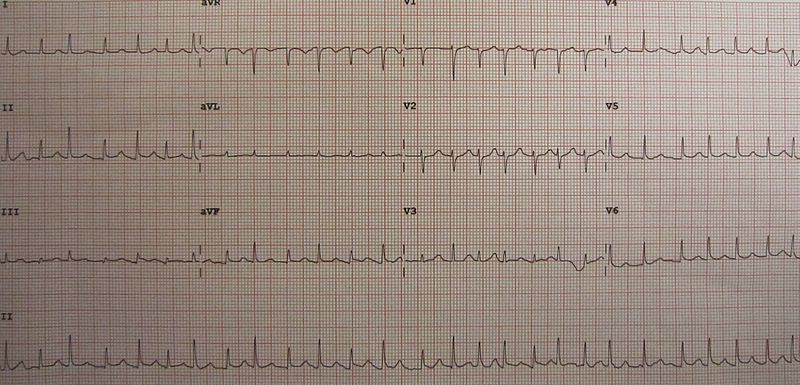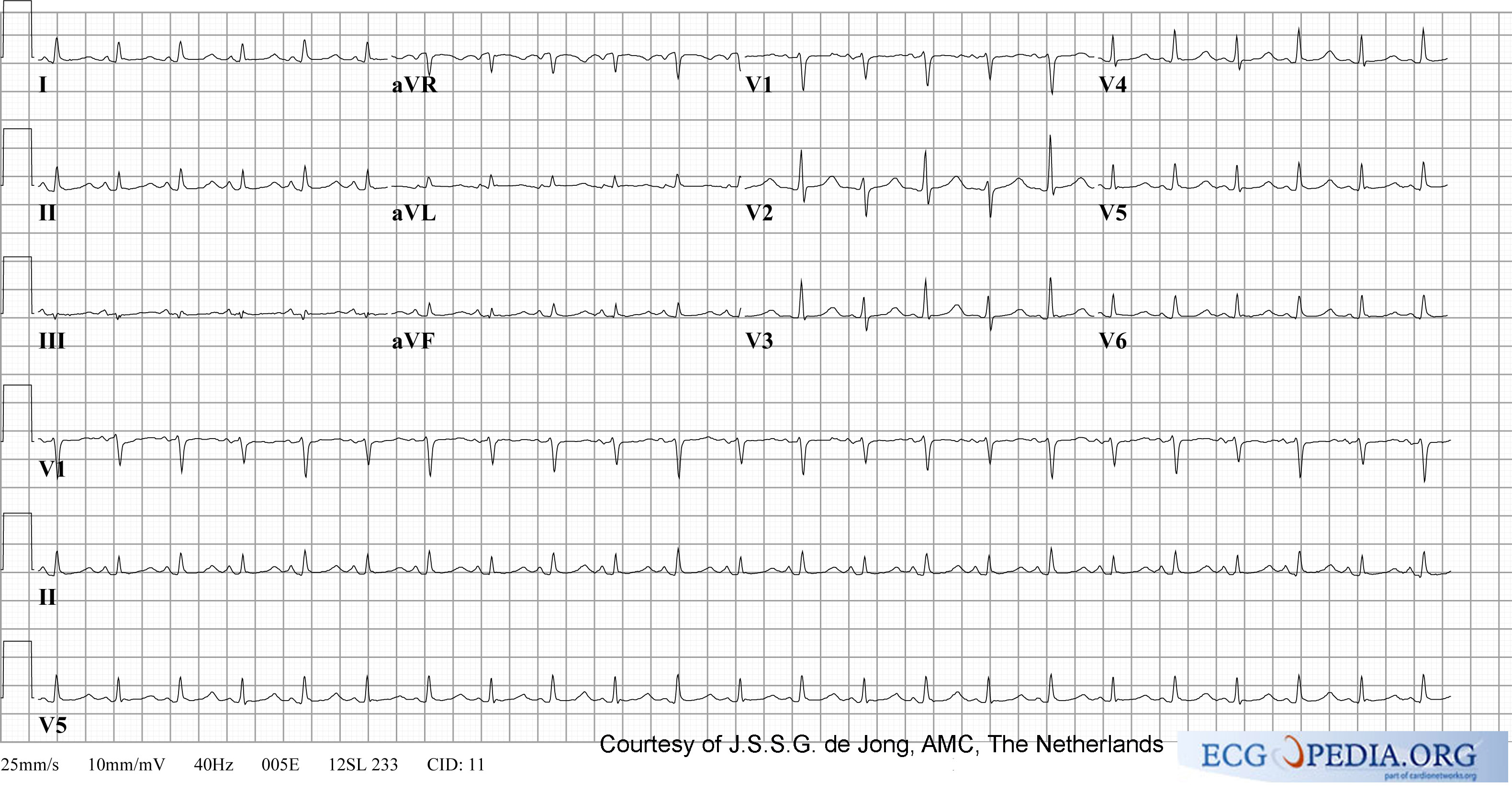Electrical alternans
|
Pericarditis Microchapters |
|
Diagnosis |
|---|
|
Treatment |
|
Surgery |
|
Case Studies |
|
Electrical alternans On the Web |
|
American Roentgen Ray Society Images of Electrical alternans |
Editor-In-Chief: C. Michael Gibson, M.S., M.D. [1]
Synonyms and keywords: QRS alternans, alternans
Overview
Electrical alternans is an electrocardiographic phenomenon which describes teh beat to beat alternation in the height (ie.e amplitude), duration (the length of the interval) or the direction (up or down) of any of the EKG complexes or intervals. While electrical alernans is usually thought of as alternation in the height or direction of the QRS complex, there can also be P wave, PR interval, QRS complex, R-R interval, ST segment, T wave, or U wave forms of alternans (see classification below).
Historical Perspective
- 1909: First described by Hearing
- 1910: Elaborated upon by Sir Thomas Lewis
- 1948: First description of electrical alternans on the surfce EKG by Kalter and Schwartz [1]
Classification
There can be alternans of any of the EKG waveforms or intervals:
P wave alternans
PR interval alternans
QRS complex alternans
R-R interval alternans
ST segment alternans
T wave alternans
U wave alternans
Pathophysiology
Electrical Alternans Due to Motion of the Heart
When the word alternans is used, the underlying pathophysiology that is most often thought of is alternans due to motion of the heart and its shifting position in relationship to the surface electrodes. The pathophysiologic mechanism underlying the alternation in the height or amplitude of the QRS complex is the swinging or shifting or the electrical axis of the heart. It should be noted that there can also be P wave and T wave alternans attributable to the motion of the heart.
While electrical alternans is frequently thought of in association with pericardial effusion, it should be noted that not all pericardial effusions cause electrical alternans, and that total electrical alternans (involving the p wave, QRS complex and the T wave) is present in just 5-10% of cases of cardiac tamponade.
It is underappreciated that the movement of the heart in hypertrophic cardiomyopathy can cause electrical altrical alternans as well.
Causes
All Causes in Alphabetical Order
- AV nodal reentry tachycardia
- AV reentry tachycardia
- Cardiac tamponade
- Hypertrophic cardiomyopathy
- Pericardial effusion
Due to Motion of the Heart
Differentiating Electrical Alternans form other Disorders
The electrical form of alternans should be differentiated from the mechanical form alternans in which case there is alternation of the strength of the pulse as is observed in pulsus alternans. Electrical and mechanical alternans may coexist.
Electrocardiographic Examples



References
- ↑ Kalter HH, Schwartz ML. Electrical alternans. NY State J Med. 1948;1:1164-66.